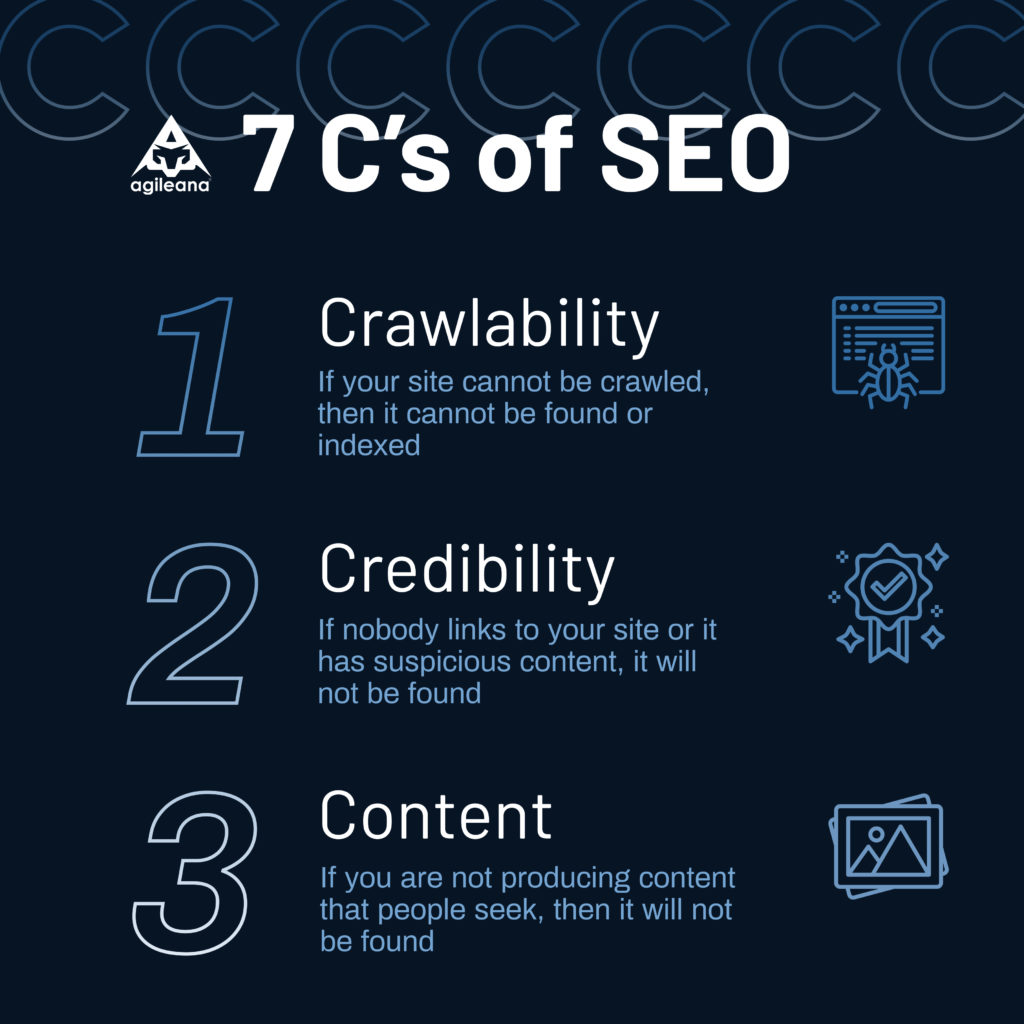The 7 C's of SEO
Want to get found on Google? This article helps to shine a light on the mysterious black box of search engine optimization (SEO) techniques so that potential clients, customers, or employees can find your site.
There is somewhat of a cat and mouse game going on at Google. Website owners try to stuff keywords and game the system to increase their chance of ranking high on Google.
Meanwhile, Google tries to keep its algorithm secret and the content that comes to the top of a search relevant. Every few months, Google will tweak the algorithm and often devalue certain “signals” so that nobody can gain an extraordinarily competitive advantage. Google, after all, makes money selling links in its Sponsored Links section. If it were too easy to rank naturally and organically then Google wouldn’t make as much money.
I have tried to sort out Google’s algorithm holistically. If you work on all aspects of your search engine optimization as if it were a complete ecosystem, then you stand a better chances of surviving changes to Google’s algorithm and hold your rankings.
I have organized my observations around what I call, The 7 C’s of Online Marketing. It goes like this…
Crawlability
Crawlability is how easy it is for search engine spiders and robots to get inside your website, to scan the words, photos and videos; and to index that information in its archives. Better crawlability paves the way for higher rankings in the search engine results page (SERP).
To make your site more crawlable, try to avoid Flash and framesets. If you have a robots.txt file, make sure is say “allow” and not “disallow” by mistake. If you have the option of using text decorated rather than text embedded in a JPG or GIF, do it. Use alt text for images. Only use tables to display tabular data – not to layout the structure of your site.
Credibility

Credibility has a lot to do with what other people, bloggers and webmasters have to say about you. For example, the more references or citations to your website, the more credibility you have.
To gain more credibility, make sure you renew your domain name for as many years as you can afford. Write as many compelling articles as you can that people will want to link to. Create as many social media profiles as you can and link back to your site. Contribute articles on other websites, like Medium, so you have an opportunity to link back to your site. Try to gain the attention, citation and inbound links of academic institutions, nonprofit organizations and possible .gov sites. Make sure your site is not hosted on the same server as gaming, gambling or adult content.
Content
Content is the actual words, pictures, links, and data you have on your site. One way search engines determine how relevant you are vis-à-vis a search it to study the content on your website.
To get more content, don’t make too much work for yourself. I’d rather see four 500-word articles a month than one 2,000 word article. So, focus on short, concise articles with catchy headlines that gets your point across quickly. Maybe you can hire some guest bloggers.
Code
Code refers to the extra emphasis you place on the content behind the scene. Among other things, it involves meta tags, title tags, headings, hyperlinks, bullet lists and other techniques to bring more attention to specific words.
Make sure you pay attention to Title tags. Every page of your site should have a unique, concise page title. Photos should have alt text and videos should have accompanying transcripts. Leverage your headings tags instead of simply increasing the font size. Make sure your URLs are both people and search-engine-friendly.

Conversation
Conversation is all about word of mouth (or post). This is an important component of search engine optimization. Particularly with the emergence and influence of social media, ratings, reviews, and localization, you need people talking about your site and referencing it from their social media profiles. So, it is important to make it easy for people to share you pages across their social media profiles.
Make it easy to share a link to your site on Facebook, LinkedIn, and Twitter. Make sure you have a blog and leave your comments open. Stoke conversation.
Competition
Competition refers to a couple of things. First, how many other websites are doing the same thing you are doing? The more competitors there are, the more difficult to rank on search engines.
The more competitive a keyword phrase is, the more difficult it’s going to be to rank high on Google. Make sure you go for the long-tail keyword phrases. Besides, a more sophisticated consumer in the advanced stages of making their buying decision will likely use a long-tail keyword search term to find you anyway. So, it’s a win-win situation.
Conversion
Conversion is about getting clicks. Web visitors do not necessarily click on the first, second, or even third entry in a search engine’s results page. Sometimes, a visitor will click a link halfway down or perhaps even on the second or third page of a SERP. The content that shows up in the SERP is important for compelling a visitor to click on that link to your website.
So, if you want to get found on Google…
… and want to stay found on Google, you need to do a lot of different things right. If you can hit it on all 8 cylinders (actually, I have an 8th C of online marketing – Compliance – as in Section 508 Compliance for web accessibility) then you can not only work towward dominating your most coveted keyword phrase but you can also stay there regardless of what other people do and regardless of how Google changes its algorith.


